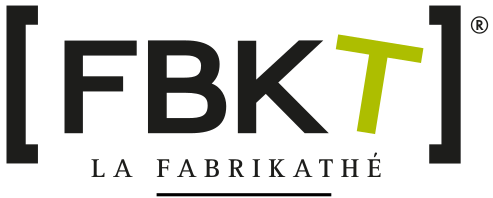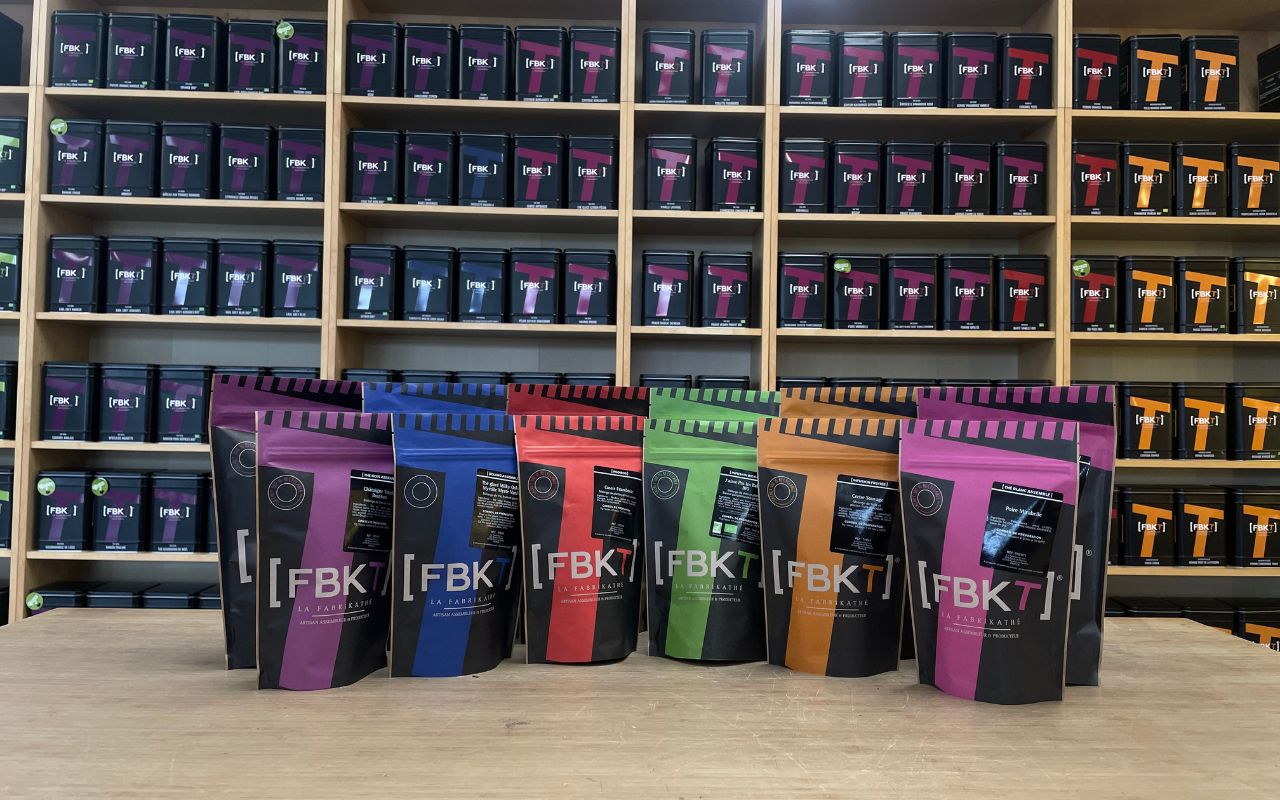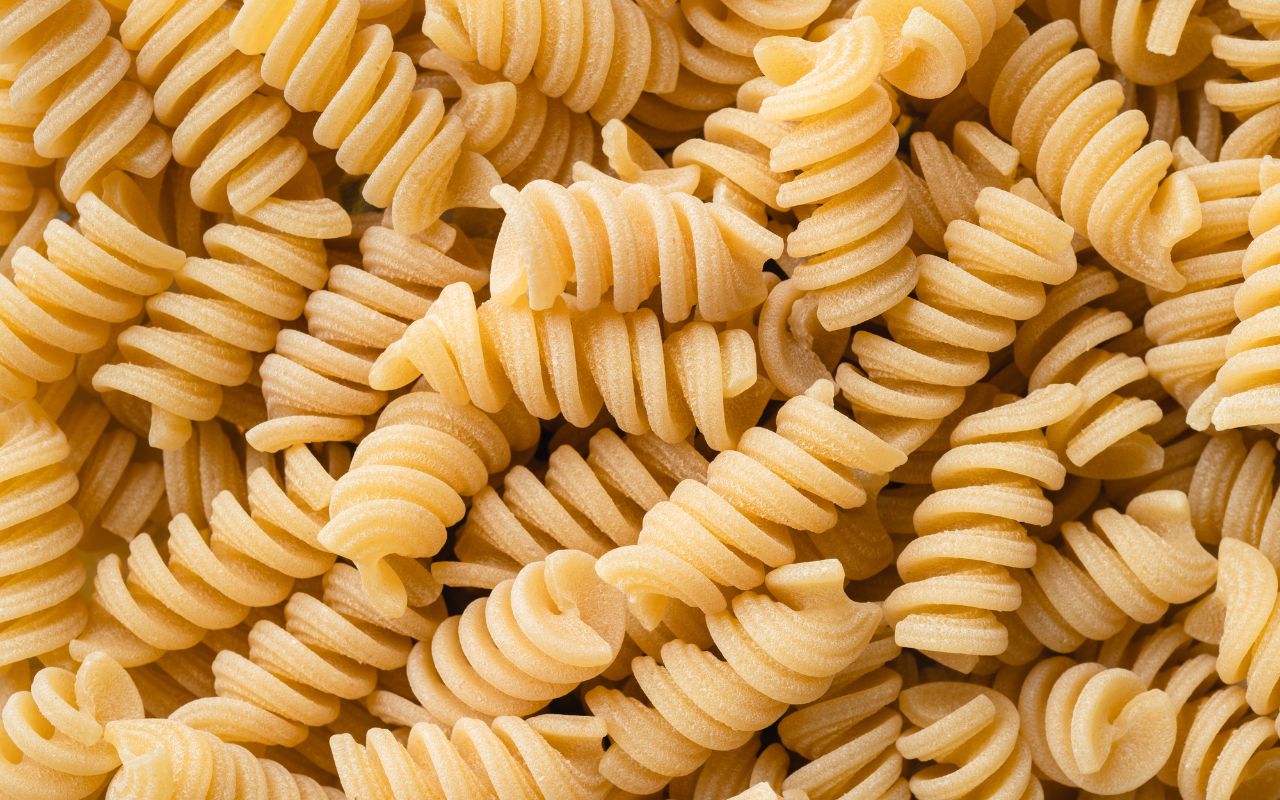This week, the whole FBKT team mobilised to carry out a first small harvest of mints: peppermint and spearmint were collected, sorted, dried and stripped. A meticulous collective work that also allowed us to perfect our organization before the big PPAM harvests planned later in the season!
Hop, everyone to the fields!
It was the girls who worked the mint this week, to help the agricultural team already busy, in addition to the daily work, to protect the 2 hectares of plantation from the high temperatures, the drought and the bad weather that our region has been experiencing these last days.
After picking in the morning sun, they set about sorting out the plants by hand, like the winegrowers, to reduce the stems and eliminate any brambles, nettles, small branches, etc. Before placing the stalks in the drying racks.
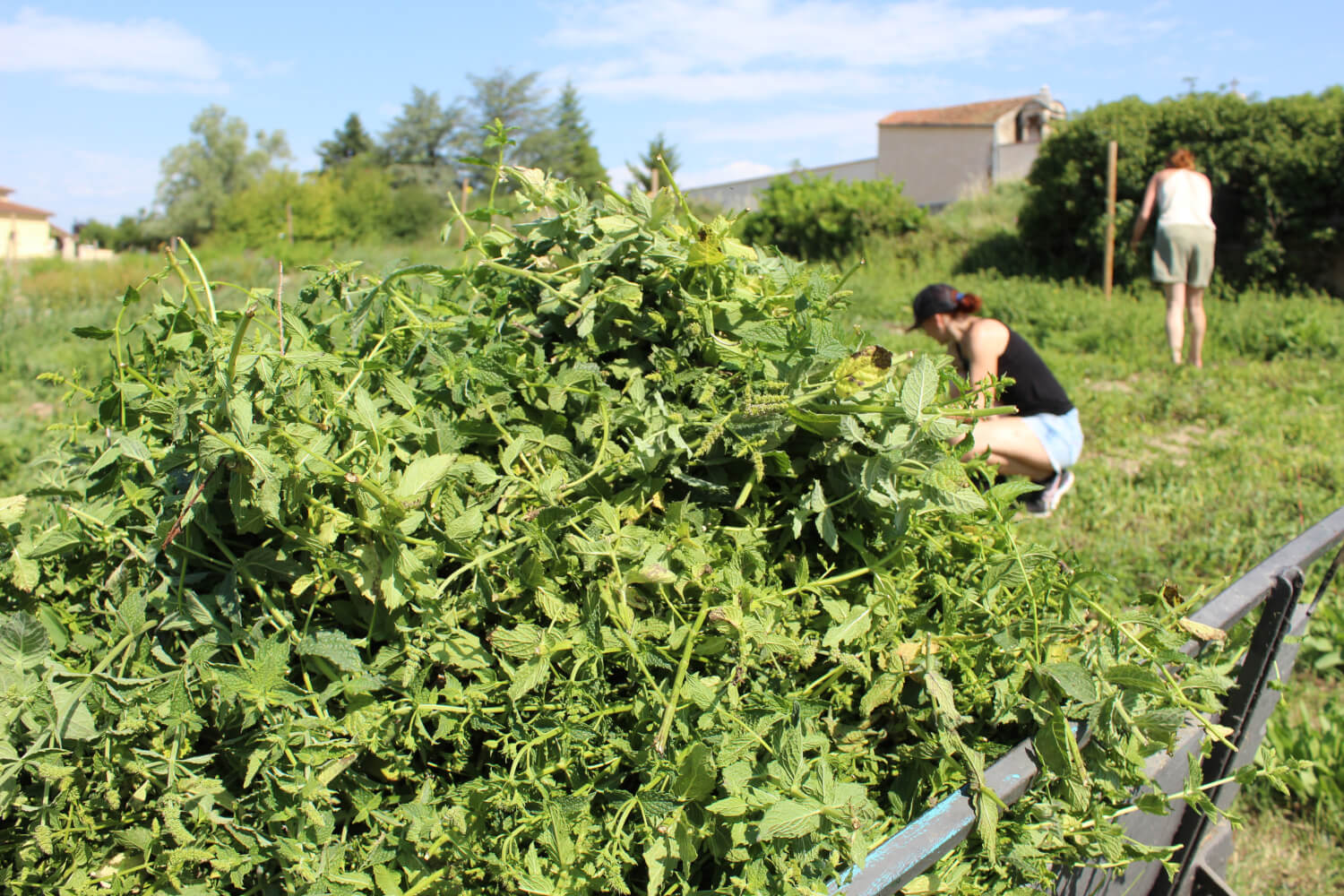
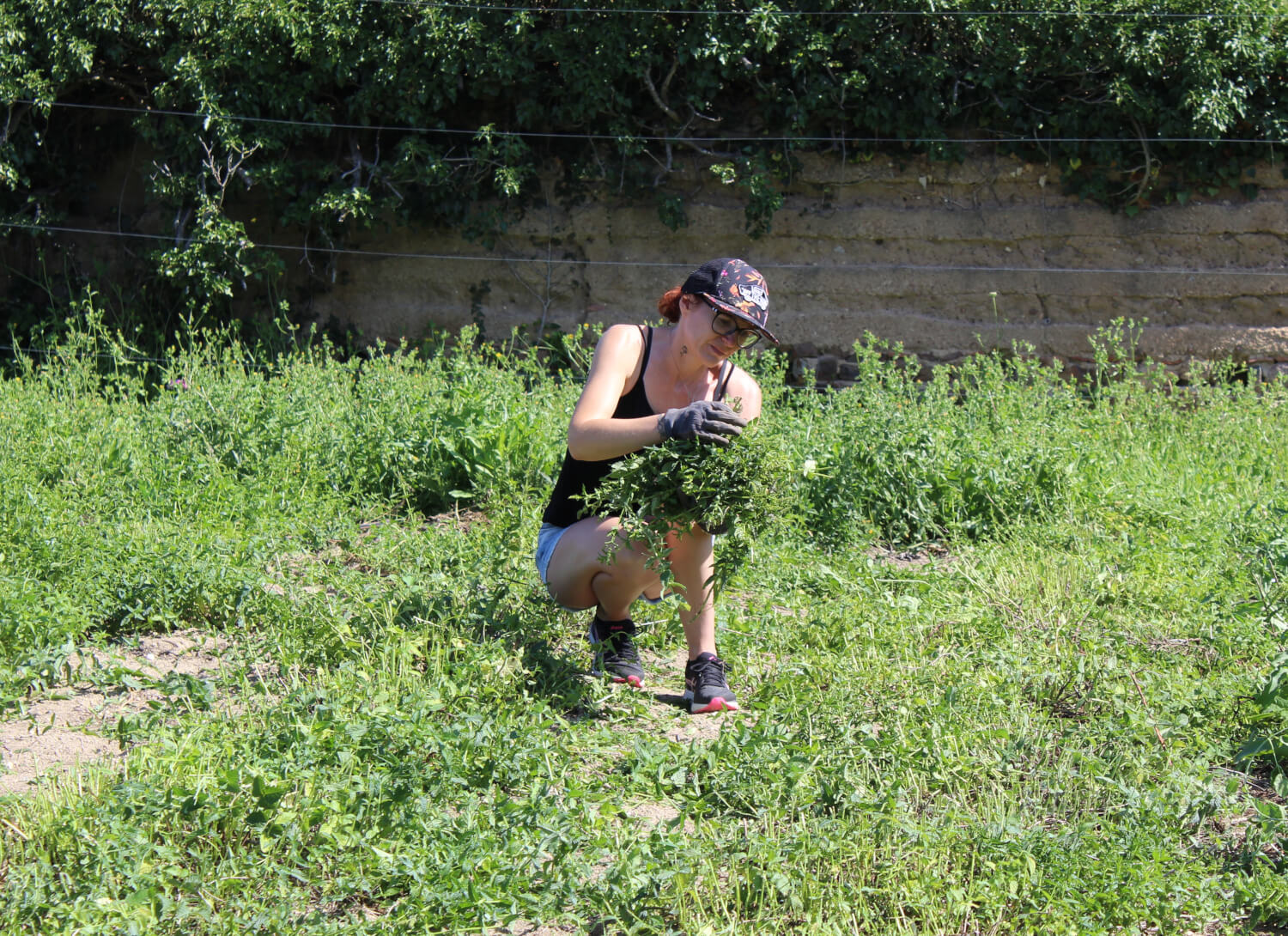
The idea is to carry out the work in a very short time: picking in the morning in the cool of the day, sorting during the day, starting the drying process that same evening for the night, stripping and packaging the next morning.
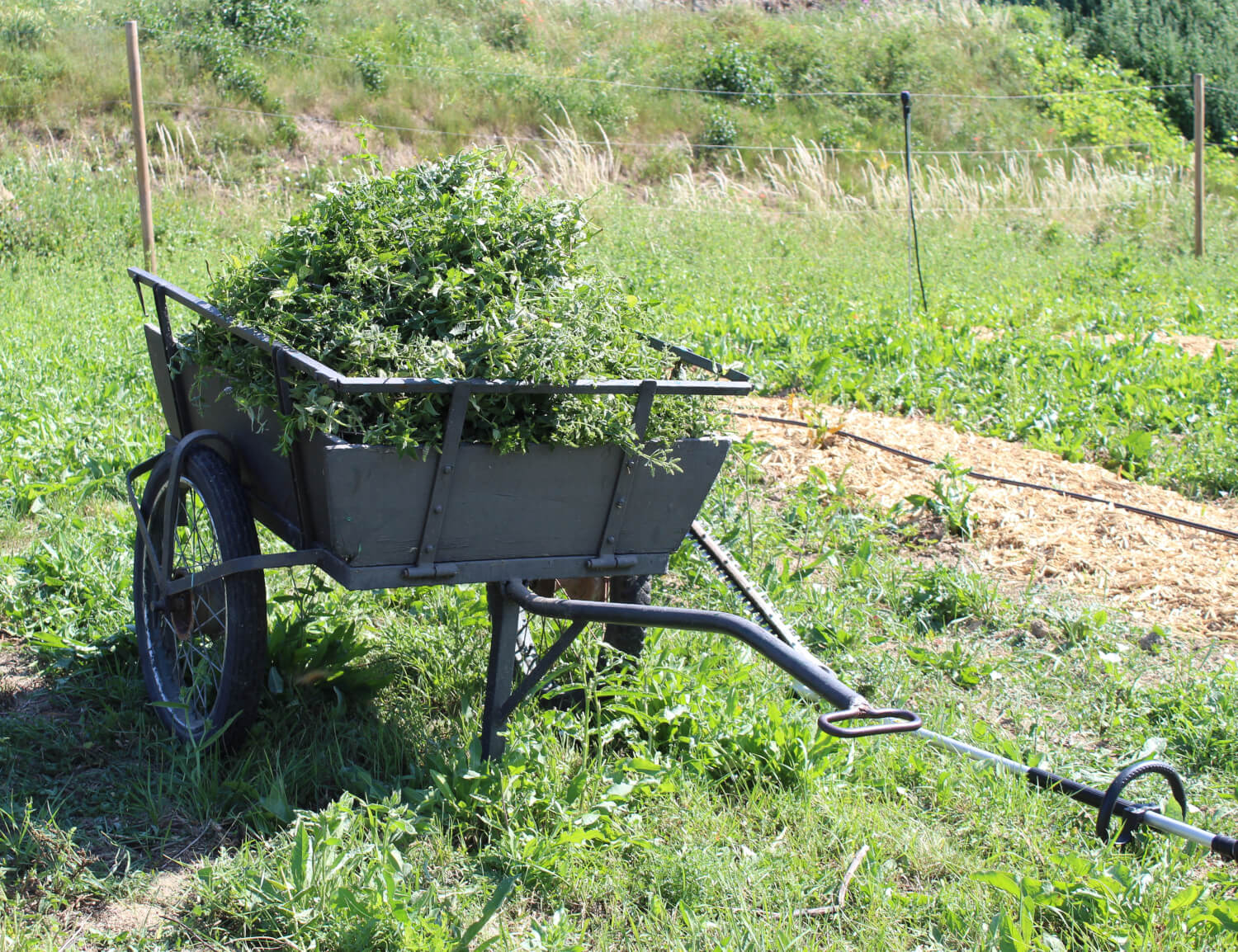
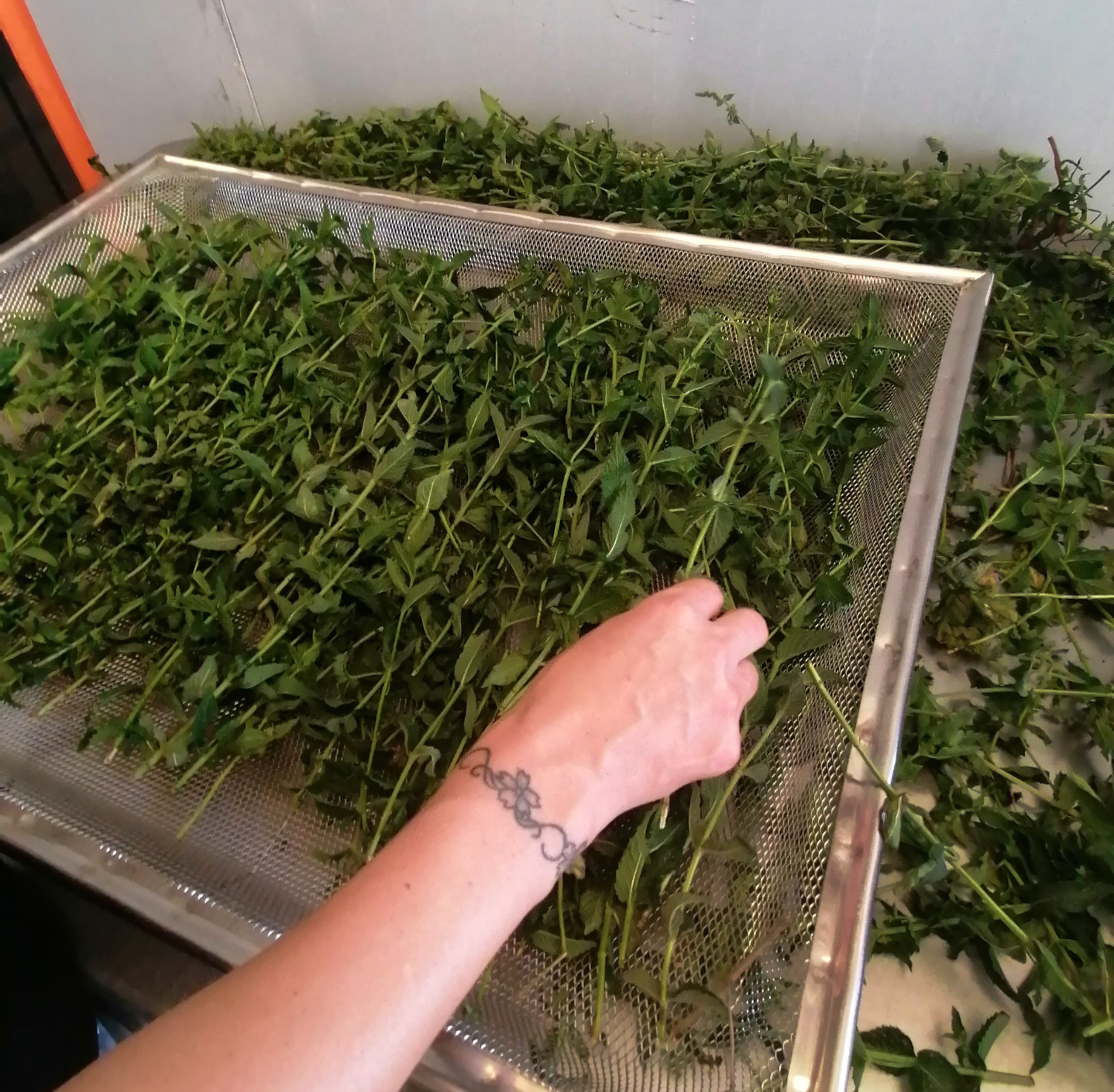
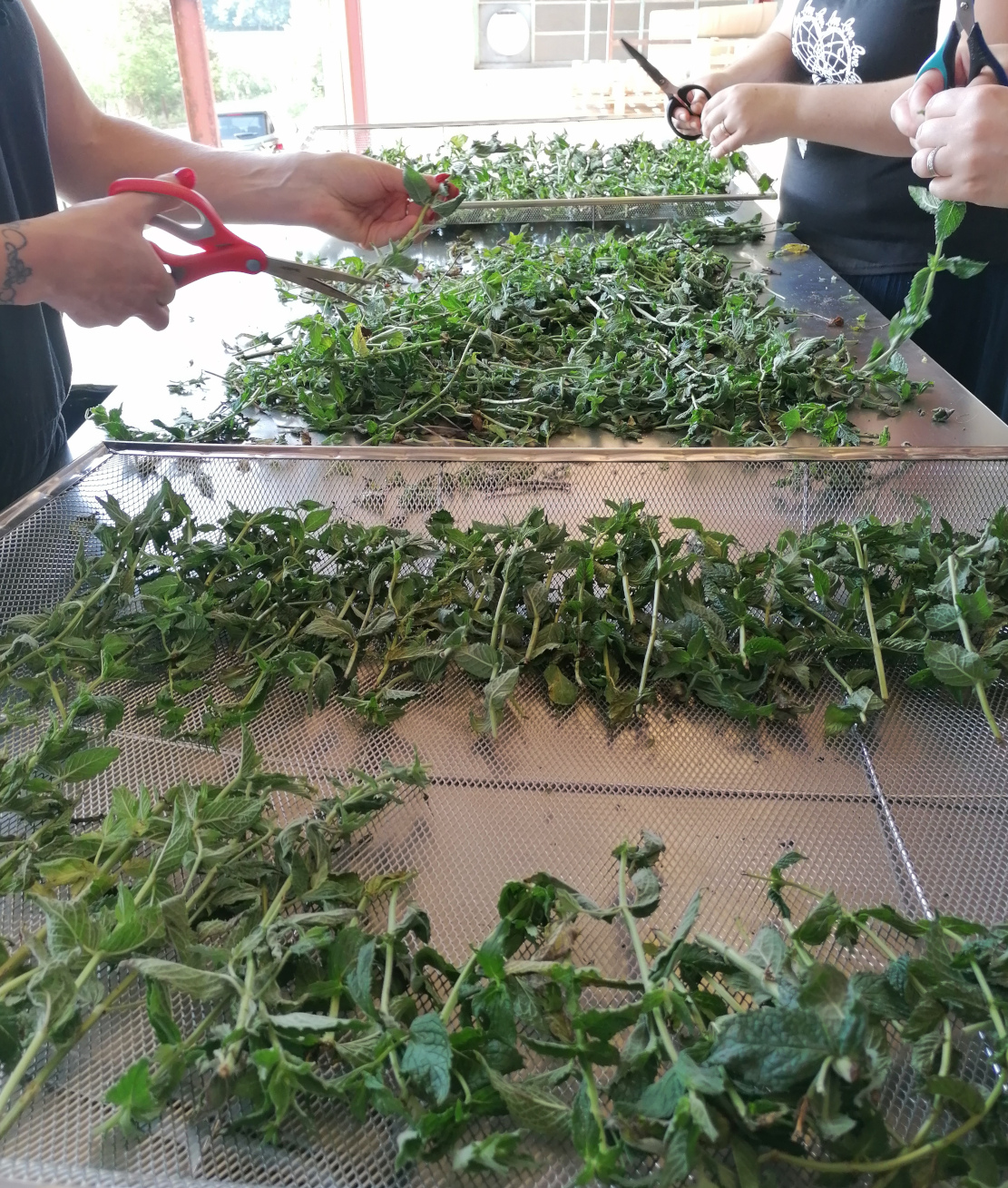
12 hours of cold drying
The mints, spread over 8 columns of 16 racks, spent the night in the dryer, for a dozen hours at around 25°C, which preserves the essential oils, limits oxidation (unlike a faster hot drying process, the one most often used in Europe – generally 6 hours at 70°C – which evaporates 70% of the essential oils) and ensures that the dried plants have a pretty green colour.
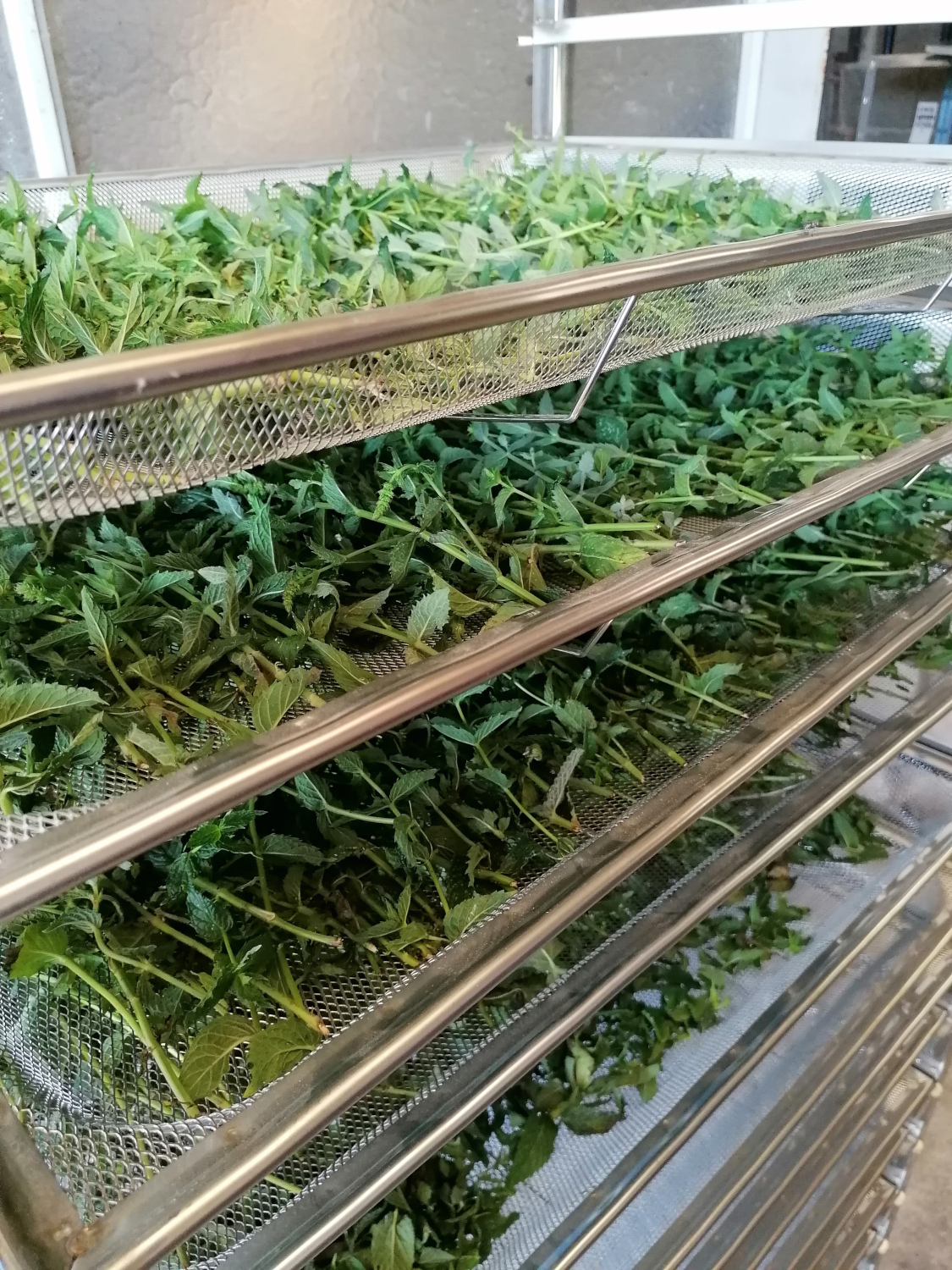
Thanks to our tests carried out at the conservatory last year, we have been able to establish a process that allows us to obtain the required residual moisture content for each plant in order to keep both a nice infusion and a long shelf life (If it is not dry enough, a plant oxidises. If it is too dry, it does not infuse anymore).
General leaf removal! 🙂
The next morning, the girls took back each tray to remove the leaves from the dried stems… a delicate job to be done with small hands to keep the leaves nice and whole.
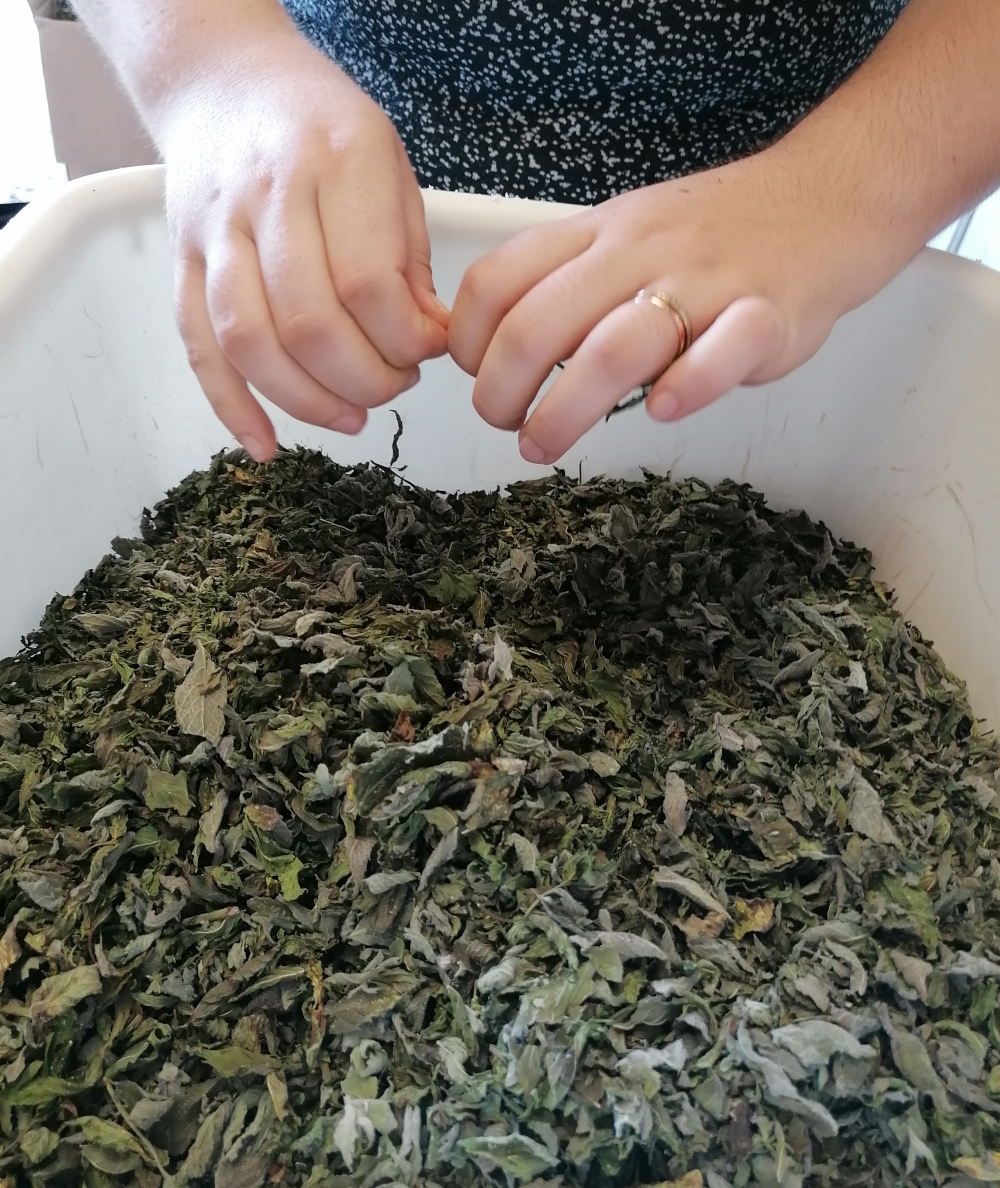
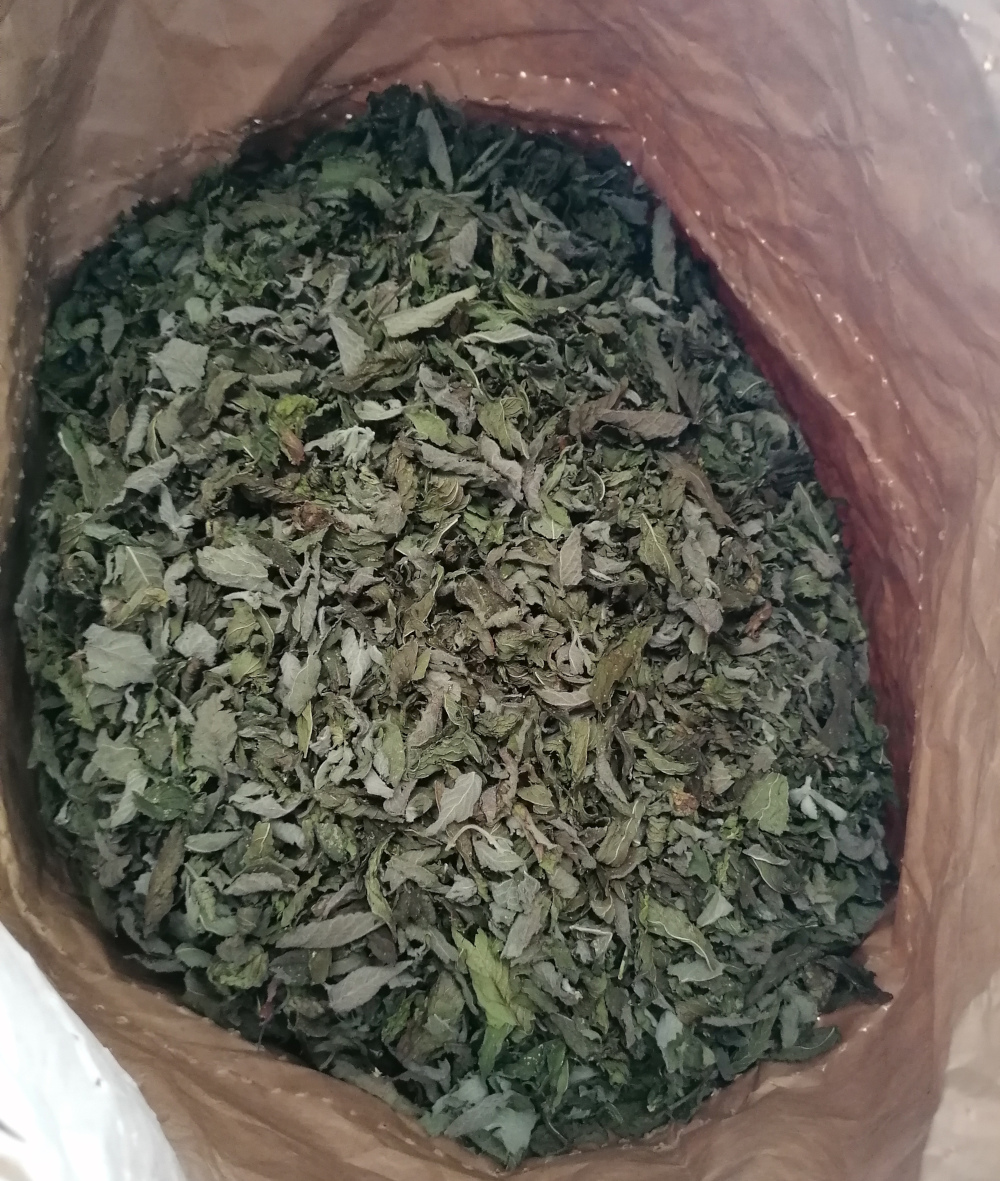
As a reminder, our plantation of PPAM (Perfumed, aromatic and medicinal plants) is intended to allow us to produce up to 20% of our needs in raw materials used in the composition of our tea and infusion blends, blends made by hand in our workshop in Pouilly les Nonains, as here with our blender Manu.
